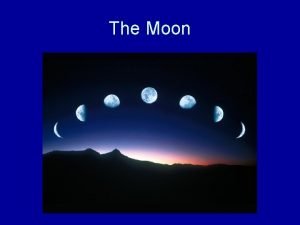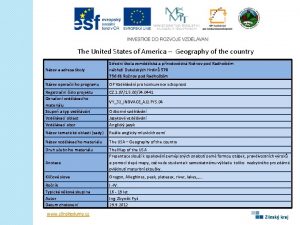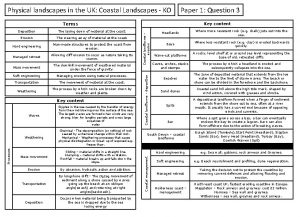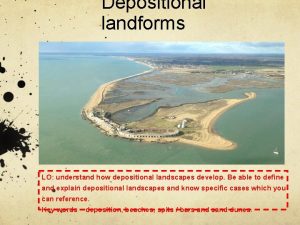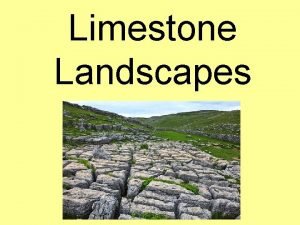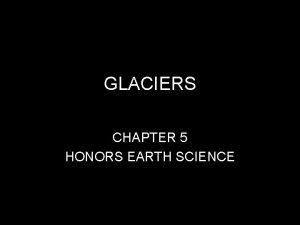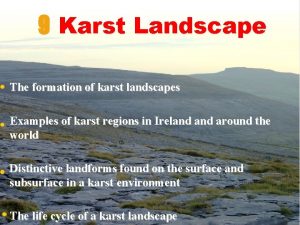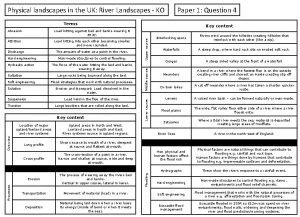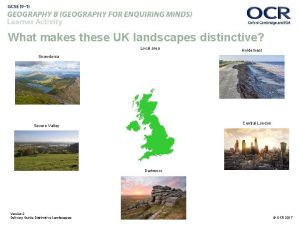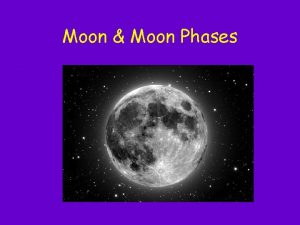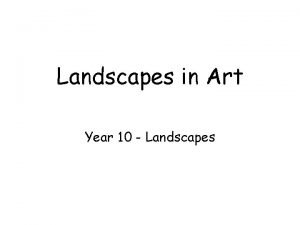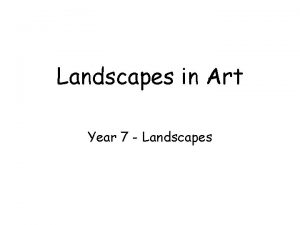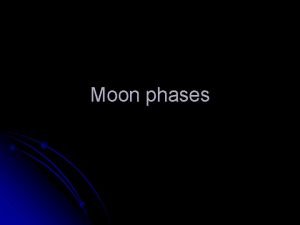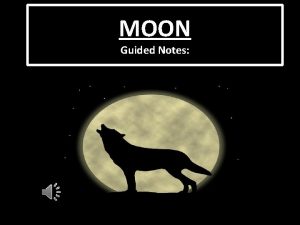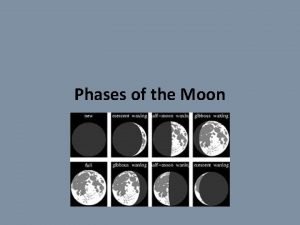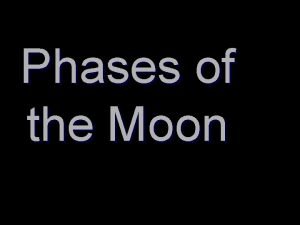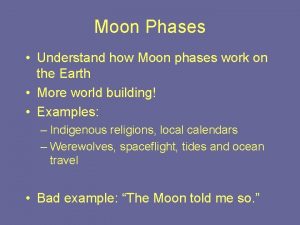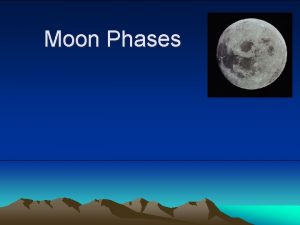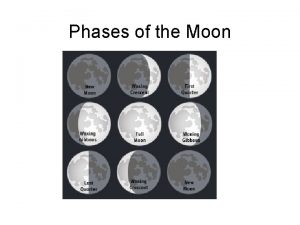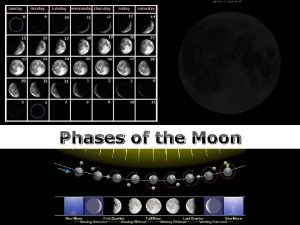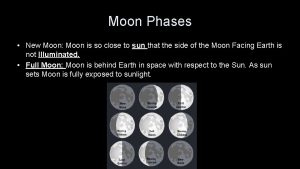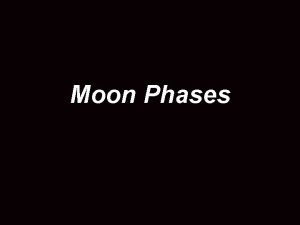Moon Phases Landscapes What causes a moon phase















- Slides: 15

Moon Phases & Landscapes

What causes a moon phase? The moon phases are produced by the alignment of the Moon and the Sun in the sky. The revolution of the Moon around the Earth makes the moon appear as if it is changing shape in the sky. From Earth we see the Moon grow from a thin crescent to a full disk (or full moon) and then shrink back to a thin crescent again before vanishing for a few days

Moon Phases There are eight phases of the moon! The phases are named after how much of the moon we can see, and whether the amount visible is increasing, or decreasing each day.


Lunar Month It takes our Moon about 29. 5 days to completely cycle through all eight phases- this is the lunar month.

Lunar Eclipse • A Lunar Eclipse occurs when the moon passes behind the Earth so the Earth blocks the Sun’s rays from hitting the moon • There is always a full moon the night of a lunar eclipse. • Can be viewed from anywhere on the night side of the Earth • Can last a few hours • Every year there at least 2 lunar eclipses although a total lunar eclipse is less common • The next one will occur on December 21, 2010.

Solar Eclipse • Occurs when the Moon passes between the Sun and the Earth and the Moon fully or partially covers the Sun • Will only occur during a new Moon • Can only be viewed by a relatively small area • At least 2 solar eclipses occur each year • Will last only a few minutes

A Harvest Moon • A harvest moon is the full moon that occurs nearest to the autumnal equinox (the Earth is neither tilted toward or away from the Sun).

Harvest Moon • The warm color of the moon shortly after is rises is caused because the atmosphere scatters the bluish component of the moonlight and allows the reddish component of light to travel a straighter path to your eyes. Hence all celestial objects look reddish when they are lower in the sky. • The large size is due to Moon Illusion- where the brain perceives a low hanging moon to be larger than one that is high in the sky. This can be seen with any full moon and other celestial objects.

Earth to Moon Scale

Moon Orbit • The moon is about 384, 000 kilometers (238, 606 miles) from the Earth • The orbit of the moon around the Earth is completed in approximately 27. 3 days. • The Gravitational pull of the Earth and Sun and the Velocity (Movement) of the Earth keeps the moon in orbit • The Moon is in orbit around the Sun (as well as in orbit around the Earth). Another way of looking at it is that the center of gravity of the Earth-Moon system is revolving around their common center of gravity. The Sun is pulling on the Moon, but the Earth is “falling” right along with it, so they stay together.

Forming the Lunar Landscape Many factors have influenced the landscape of the moon. Such as: – The lack of a significant atmosphere and any bodies of water (This eliminates erosion due to weather. ) – There is no form of plate tectonics – It has a lower gravity than the Earth – It cools rapidly because of its small size – Impact cratering & volcanism

How do we study the landscape of the Moon? • Earth Based Telescope Observations • Measurements from Orbiting spacecraft • Lunar Samples

Lunar Landscape The Lunar Landscape is characterized by impact craters, their ejects, a few volcanoes, hills, lava flows, and depressions filled by magma. The most distinctive aspect of the Moon is the contrast between its light and dark zones. The lighter surfaces are the lunar highlands (terrae) and the darker plains are called the maria (seas)

 What causes the phases of the moon
What causes the phases of the moon What causes moon phases
What causes moon phases What causes the phases of the moon
What causes the phases of the moon Which moon phase occurs directly before a new moon
Which moon phase occurs directly before a new moon Which moon phase occurs directly before a new moon
Which moon phase occurs directly before a new moon Fpm landscapes
Fpm landscapes Region 5 themes of geography
Region 5 themes of geography Landscapes and landforms
Landscapes and landforms Ideorami
Ideorami What is a spit
What is a spit What is this ?
What is this ? Morraine glacier
Morraine glacier Karst landscape examples ireland
Karst landscape examples ireland Landscapes and landforms booklet
Landscapes and landforms booklet Uk physical landscapes
Uk physical landscapes What makes a landscape distinctive
What makes a landscape distinctive
